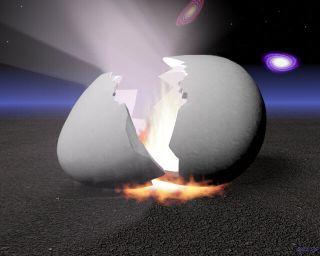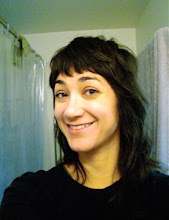1. I question Bourriaud's use of the term 'original element' when describing what, of our 'cultural production,' will 'truly serve' the culture p 143. If an artwork is original to that artist- that is, if an artist arrived at a work spontaneously and sincerely, isn't that original? or as original as something really can be?
2. Bourriaud says appropriation is one of twentieth century art's archetypes. Webster's definition of archetype is: the original pattern or model of which all things of the same type are representations or copies. If appropriating is making use of something that is not yours; in terms of an image, copying it, and an archetype is an original that is meant to be copied, then that's funny. The practice of copying
is the model to be copied. Not an earth shattering observation, but a nice dovetail.
3. "The monster exists only as opposed to nature" Nicolaus Bourriaud, Radicant p 153. "Battle not with monsters, lest ye become a monster" Friedrich Nietzsche. Short one, but affirming the same notion that it is resistance that creates a monster.
4. On page 161 Borriaud says "one could designate as artistic any activity involving the formation and transformation of culture." Is it possible that an artistic activity is any activity that involves the formation and transformation of an
individual? Not to be traditional, with the artist as a solitary genius making beautiful paintings in his studio, but as a culture is transformed individual by individual and an artist, in this sense, is an adventurer and map maker, encouraging others by sharing her experiences and insights?
5. "Art gives an account of the.... tensions between the image that an epoch has of itself and the image it actually projects." p164. Why not " the tensions between the image an epoch has of itself and its actual self? Does an epoch have a self? Does an epoch project an image? What is an epoch?
Epoch: Function: noun
Etymology: Medieval Latin epocha, from Greek epochē cessation, fixed point, from epechein to pause, hold back, from epi- + echein to hold — more at scheme
Date: 1614
1 a : an event or a time marked by an event that begins a new period or development b : a memorable event or date
2 a : an extended period of time usually characterized by a distinctive development or by a memorable series of events b : a division of geologic time less than a period and greater than an age
3 : an instant of time or a date selected as a point of reference (as in astronomy)
Does a measure of time have a self image? Maybe the individuals alive in that time share some commonalities in their self images, or in their beliefs about what is going on at that time and their statements create an image, but it is still a projection of those individuals. Technically, a self image is a projection of the ego onto the self. If the root of epoch means 'cessation, fixed point, to hold' then it is, alas, like a projection, an illusion. There is no fixed point in time. That's wishful thinking. I guess what I am trying to get at, here, is that art is a function of an individual. Not an epoch, or a time. And as such, the result might be communal, but the making of it is personal.






